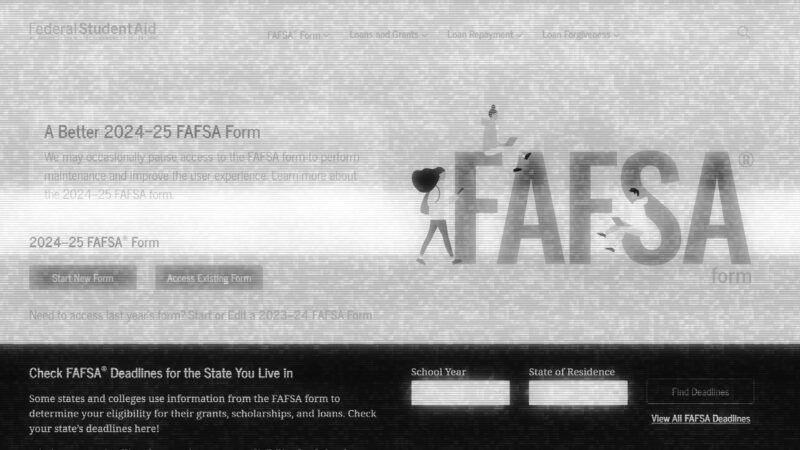FAFSA Glitch Imperils Financial Aid for 200,000 Students
A rushed attempt to simplify the financial aid form has led to persistent technical difficulties, frustrating families and colleges alike.

Millions of American students rely on the Free Application for Federal Student Aid (FAFSA) to afford college. The financial aid form is required for any student seeking federal loans or grants and is used by most colleges offering their own financial aid.
However, this year's rollout of the form has proved a logistical nightmare, with persistent technical glitches making filling out the form all but impossible for thousands of students. Adding to the chaos, the Education Department announced last week that FAFSA forms from around 200,000 applicants will need to be recalculated, leaving students—and the colleges that admitted them—in limbo.
Last week's announcement was only the latest in a string of hiccups The current crisis stems from an effort to streamline the form. In 2020, Congress required FAFSA to be simplified as part of the Consolidated Appropriations Act. A simplified form was released on December 31, 2023—nearly two months later than FAFSA's usual release. Notably, the Education Department didn't extend the deadline for completing the form.
The form's release was soon hampered by technical difficulties. Initially, the "soft launch" of the form in December led to students and their families reporting hourslong delays and frustrating bugs. Currently, the Education Department lists a cornucopia of issues on the FAFSA website requiring convoluted workarounds for students to complete the form. Some applicants, particularly those who do not have a Social Security number or whose parents do not have one, still cannot complete the form at all in some circumstances.
According to the Education Department, FAFSA forms filled out by students who reported their own financial assets had been calculated incorrectly, leaving out students' savings and investments. The faulty calculations likely led many schools to offer more generous financial aid packages than they otherwise would have.
While a simplified FAFSA sounds like a good idea on paper, the Education Department's rollout of the new form has been an unalloyed disaster—one that has left thousands of students and their families without crucial financial information.
Colleges are also feeling the brunt of these issues.
"It just continues to snowball the effect on the students who probably have the highest need, and in some instances burdens the institutions that have the least capacity to cope with the ever-changing directives that we receive," Dawn Medley, an administrator at Drexel University, told The Wall Street Journal, adding that the school usually receives FAFSA records for around 25,000 students yet has only been given 10,000 so far this year.
"We're beyond weary, and there's a general distrust that there won't be more errors found," Justin Draeger, president and CEO of the National Association of Student Financial Aid Administrators, told the Journal. "It just feels like the hits don't stop coming."



Show Comments (25)